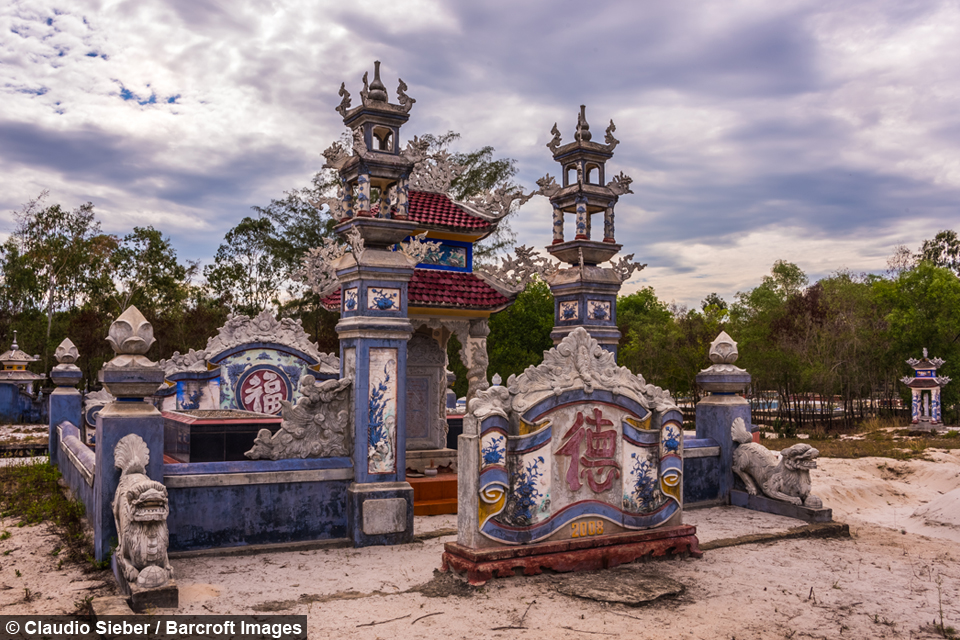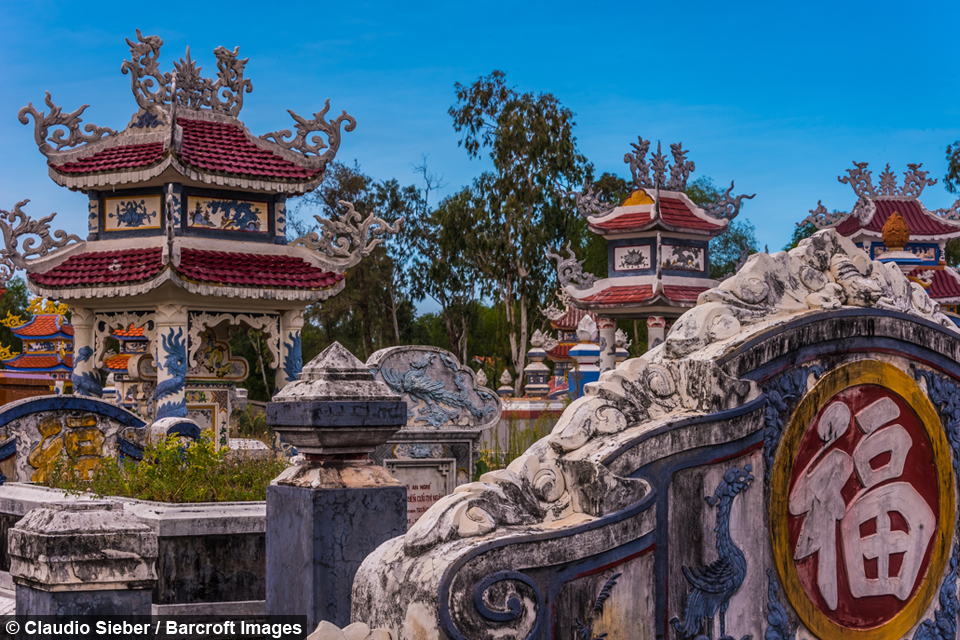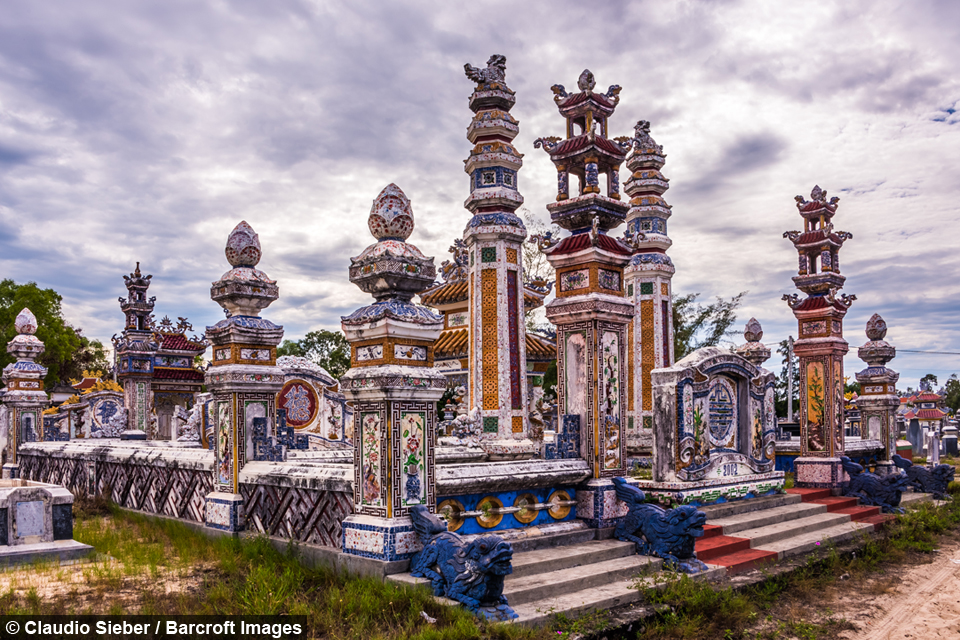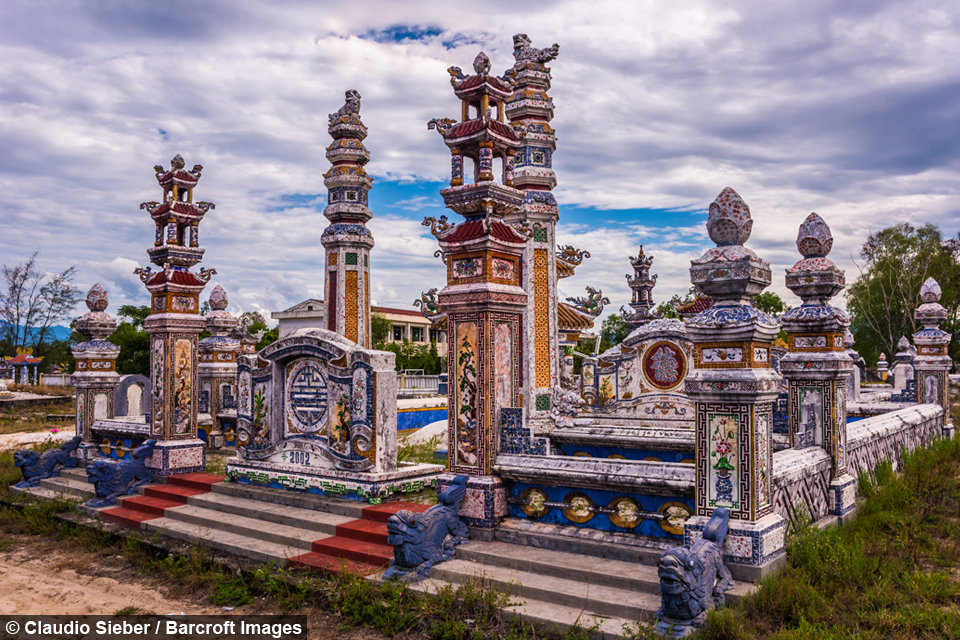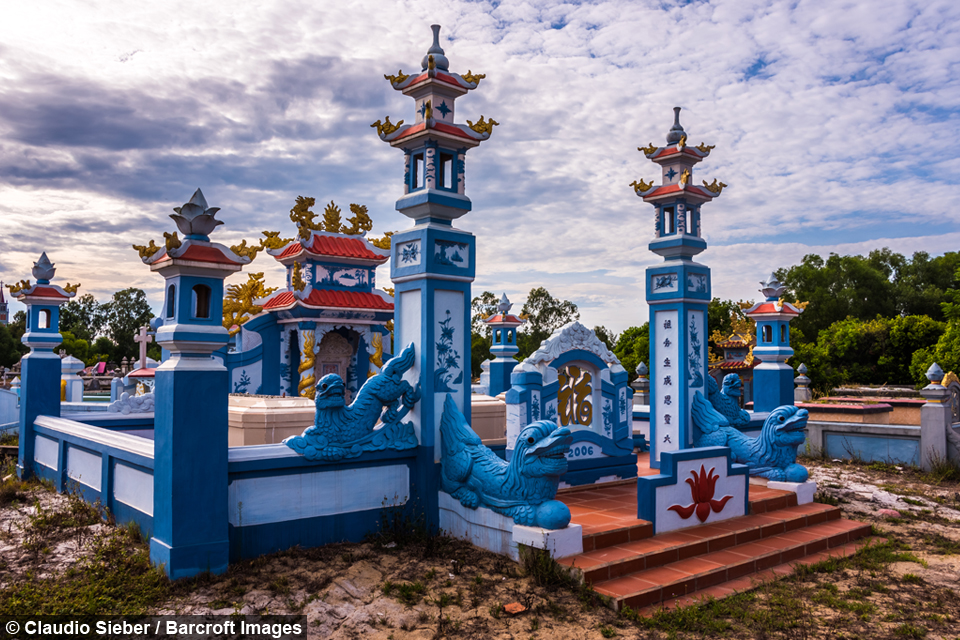Vietnamese Villagers Spend Tens Of Thousands Of Dollars On Extravagant Tombs
By Hannah Stevens @hannahshewans
Scroll down for the full story
Newcomers to the village of An Bang would be forgiven for assuming locals live in the intricately decorated structures but these colourful graves are strictly for the dead.
Photographer Claudio Sieber was in the region visiting a friend when he heard about the cemetery and set out to document it.
He said: “The area of Vietnam’s ancient capital of Hue is famous for its royal Chinese influenced architecture.
“As for the cemetery of An Bang around 90 percent of the villagers have overseas relatives, those relatives send money home and much of this is used to build tombs.
“They build lavish and elaborate tombs for their ancestors but also for family members who are still alive.
“Meanwhile, the homes of the villages remain humble but the dead rest in luxury. In Vietnamese culture, death is a very important topic, they invest in afterlife, assuming that what you have in the present you’ll have in the underworld.”
Even though the average annual income in Vietnam is about $2000, villagers in the rural community will invest tens of thousands of dollars to construct elaborate tombs for their loved ones - sometimes before they even die.
According to its communist government, Vietnam is officially an atheist state but many Vietnamese people still believe in the power of spirits and their ancestors.
The tombs in An Bang are built in various styles including Buddhism, Taoism, Catholicism, Vietnamese, Chinese and even some Western styles.
Sieber added: “|t’s incomparable to other majestic graveyards, like the one in New Orleans I visited two years ago.
“It’s neither a spooky nor a sad place. One can feel that death is an important chapter in Vietnamese tradition.
“The graveyards are beautiful coloured, structures with stone lions or dragons built on white sand. Some mausoleums are as big as a mansion.”
Many of the tombs are inspired by the copies of Nguyen Kings’ tombs in Hue - where many emperors of the Nguyen dynasty are entombed - or by the Royal Citadel in the capital.
Claudio said: “When I was there it was just me and a few gardeners. An Bang is not a frequented tourist site.
“The idea to turn An Bang Cemetery into a tourist site was suggested by the Vietnamese Culture and Art board in Hue city, but now there is just a handful of tour operators bringing people there from Hue.”


